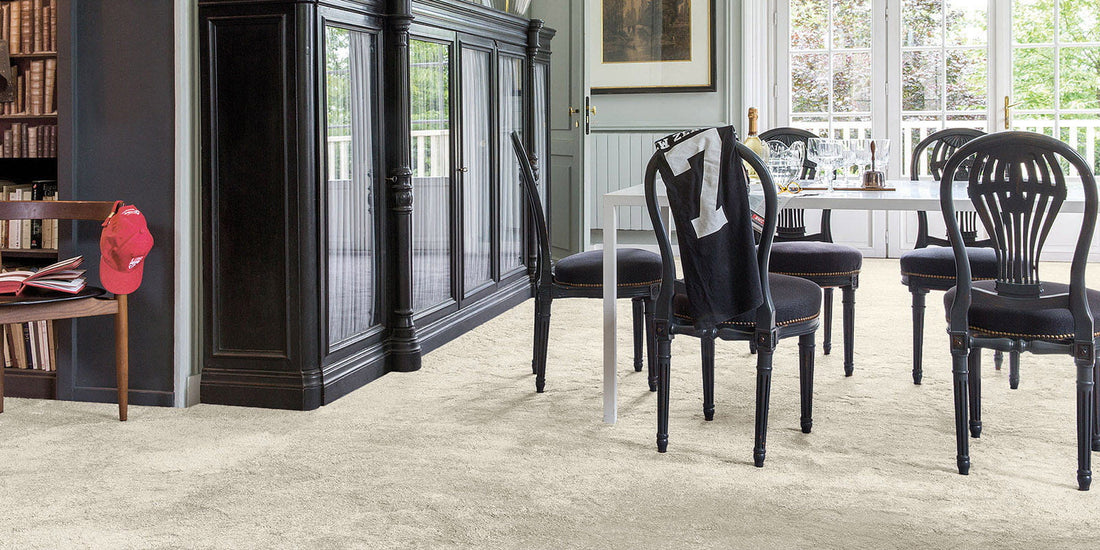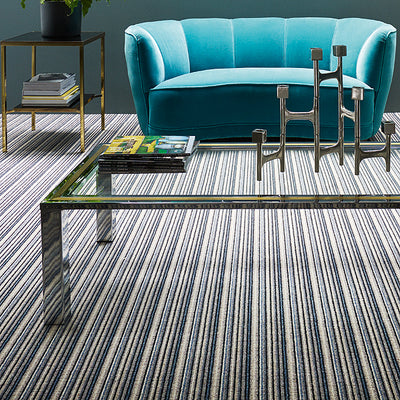
Thick Carpets: Is Thicker Better?
When it comes to flooring options, few materials evoke comfort and warmth quite like a thick carpet. The soft, cushioned feel underfoot, combined with the aesthetic appeal and sound insulation properties, makes thick carpets an attractive choice for many homeowners. However, like any flooring material, thick carpets come with both advantages and disadvantages. Deciding whether a thick carpet is right for your space goes beyond simply choosing a colour or texture—it’s about assessing your lifestyle, room function, and maintenance requirements. In this blog, we’ll dive into the pros, cons, and key considerations to help you make an informed choice.
Are Thick Carpets Popular?
Thick carpets have seen fluctuating trends in popularity over the years. While some homeowners favour sleek, minimalist hard flooring options like wood or laminate, many still appreciate the luxury and cosiness that only a thick carpet can provide. In colder climates, thick carpets remain highly popular due to their excellent insulation properties, whereas homes in warmer regions may use them selectively in bedrooms or living areas where comfort is prioritised.
The carpet industry has adapted to changing tastes, offering a range of options to suit modern preferences. Carpets today come in various materials, pile heights, and styles, allowing homeowners to find options that balance both aesthetic and practical needs. From plush, high-pile carpets that evoke luxury to low-maintenance options that withstand heavy foot traffic, the range is extensive. Thick carpets are far from being outdated and continue to be favoured for specific spaces and functions.
Advantages of Thick Carpets
Opting for a thick carpet brings several benefits to Advantages of Thick Carpetsyour home, including comfort, insulation, and enhanced aesthetics. Let’s look at each advantage in detail:
1. Exceptional Comfort
One of the most appealing aspects of thick carpets is the luxurious comfort they provide. The deep pile creates a soft, cushioned surface, making it an ideal choice for areas where you may spend time barefoot, such as bedrooms or living rooms. The thick, plush fibres absorb impact, providing a gentle surface that’s easy on joints and ideal for families with young children who play on the floor.
2. Better Insulation
Thick carpets are excellent insulators, making them highly popular in colder climates. By trapping heat, they help maintain a warmer temperature in your home, which can in turn reduce energy bills. In winter, thick carpets feel cosy and warm underfoot, unlike hard floors that can feel cold and uninviting. This quality makes thick carpets ideal for rooms where you spend a lot of time, especially during colder months.
3. Improved Sound Insulation
Thick carpets are great for sound insulation as well. They absorb sound, reducing the noise that travels between floors and rooms. For households with children, pets, or multiple levels, a thick carpet can create a quieter environment by dampening footsteps and minimising sound reflection. This feature is particularly beneficial in high-traffic areas, multi-storey homes, or apartment settings where soundproofing is a priority.
4. Enhanced Aesthetic Appeal
Thick carpets exude a luxurious and inviting appearance that adds character to any room. They come in a variety of styles, colours, and patterns, allowing you to personalise your space. Whether you prefer a modern, sleek look or a classic, cosy vibe, there’s a thick carpet option to match. The right carpet can serve as a focal point of a room, bringing warmth and charm that complements the overall décor.
5. Increased Safety
For households with young children or elderly individuals, thick carpets can provide an added layer of safety. Unlike hard floors, thick carpets offer a soft surface that cushions falls and reduces the risk of injury. This makes them particularly suitable for spaces where falls are a concern, such as playrooms or bedrooms. The soft, forgiving surface also helps to prevent slipping, which is a significant advantage in homes where safety is a priority.
Disadvantages of Thick Carpets
While thick carpets have many advantages, they also come with certain drawbacks that should be considered. Here are some of the potential downsides of choosing thick carpeting:
Higher Maintenance Needs
Thick carpets require regular and thorough cleaning to maintain their appearance and hygiene. Dirt, dust, and allergens can easily get trapped in the deep pile, and vacuuming may not always be sufficient to remove all particles. Additionally, thick carpets can be prone to staining, and any spills or pet accidents should be addressed immediately. To keep them looking and feeling fresh, thick carpets may require professional cleaning at least once or twice a year, which can add to the overall cost.
Higher Costs
Thick carpets tend to be more expensive than thinner options, both in terms of initial purchase and maintenance. The installation costs may also be higher, as thicker carpets are heavier and require more time and effort to install properly. Over time, the cost of maintaining a thick carpet, especially in high-traffic areas, can add up. For budget-conscious homeowners, the upfront and ongoing costs of thick carpeting might be a deterrent.
Not Ideal for High-Traffic Areas
In areas with high foot traffic, such as hallways or entryways, thick carpets can wear out faster than other flooring options. The plush fibres can become flattened over time, leading to visible traffic patterns that can detract from the carpet’s appearance. Frequent foot traffic can also make it harder to keep the carpet clean, as dirt is more likely to get embedded in the deep pile. For these areas, low-pile carpets or hard flooring might be more practical.
Susceptibility to Allergens
Thick carpets can trap dust, pet dander, and other allergens within their fibres, which can be problematic for individuals with allergies or respiratory conditions. Even with regular cleaning, allergens can build up over time, leading to a less-than-ideal environment for those who are sensitive. If anyone in your household suffers from allergies, it’s essential to consider this drawback and weigh it against the carpet’s benefits.
Moisture
Thick carpets are generally not suitable for areas with high moisture levels, such as bathrooms or basements. The dense fibres can retain moisture, which creates an environment for mould and mildew growth if not properly maintained. This is particularly concerning in humid climates or areas prone to spills. Once mould takes hold, it can be challenging to remove and may require professional cleaning or even carpet replacement. Therefore, thick carpets should be avoided in areas where moisture levels are high.
Things to Consider Before Installing Thick Carpets
If you’re considering installing a thick carpet in your home, here are some factors to keep in mind:
- Room Function and Traffic Level: Thick carpets are ideal for bedrooms, living rooms, and other low-traffic areas where comfort is a priority. In high-traffic areas, you may want to consider a lower-pile carpet or another flooring type altogether.
- Climate and Moisture Levels: Consider the climate you live in and the moisture levels in your home. Thick carpets are best suited for dry, cool climates, as moisture can lead to mould and mildew issues. In the UK, with central heating, thick carpets are a good option and there shouldn’t be high moisture as long as rooms have heating.
- Budget and Long-Term Costs: Thick carpets are an investment, not only in terms of purchase and installation but also in maintenance. Be prepared for the possibility of regular professional cleaning.
Thick carpets are a popular choice for many homeowners because of their comfort, warmth, and aesthetic appeal. They provide excellent insulation, soundproofing, and safety, making them ideal for bedrooms, living rooms, and other low-traffic areas where comfort is a priority. However, thick carpets also come with drawbacks, including higher maintenance needs, potential allergen buildup, and unsuitability for high-moisture areas. Homeowners should weigh these pros and cons carefully and consider factors like climate, budget, and household needs before making a final decision.
So, will you buy a thick carpet?
Choosing a thick carpet can be an excellent decision if you prioritise comfort and aesthetics in specific areas of your home. The cosy, luxurious feel of thick carpeting makes it a popular choice for bedrooms and living rooms, where comfort is king. However, thick carpets also come with unique challenges, including maintenance demands and susceptibility to allergens and moisture. By considering the pros, cons, and key factors mentioned above, you can decide if a thick carpet is the right fit for your lifestyle and home environment. In the end, with careful selection and proper upkeep, a thick carpet can be a worthwhile investment that enhances the comfort and visual appeal of your space.







